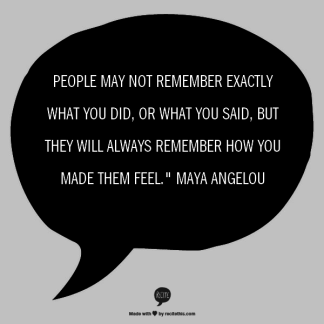
How Online Engagement is Like a Blind Date
September 1, 202010 Steps To Begin Engaging an Audience Online
Engaging an online audience is like going on a blind date, first impressions are everything. The way you dress, look, or present yourself can be very telling on a first date. Similarly, the headlines you use, the intro sentence, or how you start an online conversation when you first engage with a new reader, determines if the reader will continue to read and engage with your content or not.

“On average, only 1 out of 5 readers gets beyond your headline!” – David Ogilvy.
David Ogilvy
So in reality, 80% of the people you are attempting to engage online don’t make it to your content, let alone read it in its entirety. This doesn’t only go for blog posts or major companies trying to engage with millions of users but for literally anything you share online. It is all an attempt to engage an audience or start a conversation, whether it’s a tweet, status update, or a 4-page article. “People go online to talk [write] and listen [read] and so conversation is a critical factor in an online community’s success.”
Therefore, the online engagement strategy to engage an audience long term may differ, but the steps to get their attention and start a conversation are very similar. The common denominator here is the intention of all users to converse online, and the goal is to get them to get to choose your conversation to join!
Here are the 10 steps I have found to engage an audience online
1. Do Your Homework – Research who your audience is and what they like!

Take the time before you open any lines of communication to know who your audience is. Look at their interests, and what engages them. It is like googling the person you are about to go on a date with – basics. This probably is the most important step, because based on your findings you will know how you can begin to engage your audience and turn them into loyal customers.
If you are engaging with a specific audience, a good place to start is to look at a commonality between them. That could be age, career, sport, etc and go from there. If you are trying to engage with a person or a small group of people look at the common ground between yourself and them, and begin with that.
Pro Tip: Google Analytics Demographics and Interests can be a good place to start looking at users’ interests.
2. Keep things interesting – What’s in it for me?
If you want to grab your audience’s attention put yourself in the reader’s shoes and write about what interests them and not what interests you. Studies show people are more likely to engage if you use memory inducing triggers. In other words, write about what people were already thinking about and can recall most easily. The book, Contagious – Why Things Catch On, explains this concept extensively.
The first step to engagement is showing the audience that your content is something they’re interested in and also worth their time. The human attention span is about 8 seconds, and that is about how much time they need to read your opening sentence or headline and decide if it’s worth their time or if they will be moving on to something else.
3. Help your audience find you – Wear an identifier

Include keywords in your writing that will ensure that whoever is looking for similar content, topics, or ideas, is able to find you. The first thing people scan for in a title or the first sentence of a message is the keywords that jump at them letting them know that they are in the right place. It’s like the cliché red rose that a guy always wears to a blind date, or any agreed upon marker between the two. The idea is to know how to balance creativity in writing with identifiers of the content you are about to share. It is a difficult balance that might take some testing and experimenting.
For example, if you are writing a post about your favorite chocolate brand, titling the post ‘Coco awesomeness!’ doesn’t really tell me much about what you’re writing about. As opposed to ‘The greatest chocolate brands!’. The latter lets the reader know what they will be reading about. Further, instead of showing up on a search on coco, you will actually be able to target the audience most interested in the topic, chocolate lovers.
4. Positive Framing – Give a compliment
Research by O’Keefe and Jenson shows that positively framed sentences and headlines are more engaging and likely to be read than others. People like to be given compliments, pick-me-ups, and hope. If you are able to convey that in your opening sentence people are more likely to be engaged. Taking a neutral sentence like ‘the effects of dieting’ into ‘Ways dieting helps you improve your life’ can help your audience engage. Positive framing allows people to see the good in what they are about to read and are therefore encouraged to read it.
5. Don’t be afraid to be emotional – Be considerate!

Empathizing with someone you’re having a conversation with is usually a given for anyone trying to be courteous. However, we usually don’t lend the same courtesy online when we’re trying to build an audience. If you are writing about a topic that is easily relatable or of interest to the audience, including associated emotions in the opening sentence or title is a great way to connect with your audience.
It is like the common saying goes, “people may not remember exactly what you did, or what you said, but they will always remember how you made them feel.” Engaging an audience on an emotional level not only boosts the likelihood people will read your content but more importantly that they will relate to it.
For example: Instead of writing ‘Exercising improves your productivity’, try ‘How exercising made me happier and more productive’. This is both a way to positively frame your statements and have the reader engage with them on an emotional level. That is not to say, however, that negative or sad emotions should be avoided in your social media strategy. Simply be cognizant of your audience, the content, and how you want to make the reader feel after they’ve read your content or statement.
Pro tip: Showing empathy towards a common problem can also be mixed with a question, “have you ever felt…?”
6. Ask Questions – Pique their interest
A known conversation starter is to ask questions, most notably about the weather. Similarly, a great way to pique people’s interests is to ask them a question they’d want to find the answer to. If you’ve already researched the audience’s interest (reference step 1), then asking a question that will pique their interest isn’t difficult. It’s also a great way to engage with the audience and get their input as to their own opinions about your answer, or their own versions of the answer.
Ask questions but be cautious as you walk down that route. As Daniel Kahneman wrote in his book Thinking Fast and Slow, asking questions is likely to capture people’s attention and get them to think. However, that only helps your online engagement if the question makes us curious, and is not too challenging, because then we tend to skip it.
7. Emphasize the Social Aspects – Socialize!
You’ve made it this far in the date, and now it’s time for possibly the hardest part, socializing. Just like with social media engagement, the point is to hold a conversation and not simply pass on information. The reader wants to feel that through reading your content they have been able to gain. The greatest gain from social media is the feeling that you have gained social know-how.
That is why Berger emphasized in ‘Why Things Catch On’ the need to create social currency, not only making people feel smart but also feel like they are in the know. You don’t have to be promoting a brand to create a social currency, it’s simply information that encourages further social engagement. It might be including the fact that this is a discussion, or asking what the audience thinks about the topic. Inviting the reader to engage with what you’ve shared early on sets a tone to what you are about to share as not simply well crafted content.
8. Be Precise – Pay Attention to Detail

On a date, you get brownie points for being able to pick up on the details shared with you. Likewise, being able to share details about you allows the listener to relate to you and get to know you better. Thus the more precise your intro and headline are on what you will be sharing, the more your audience will be interested and engage. Broad topics do not really give your reader an idea of what you’ll be talking about. If neither the headline nor the first sentence shows exactly what the content will be about, the reader will be less inclined to read through it.
Example: ‘Content Marketing Method’ is very different from ‘The Best Ways to Improve the Shareability of Your Content’.
9. Be structured – Show you have a plan for the night

A great date is a well-planned date, and a great post is a well-planned post. Show the reader that you have a road map as to what you will be talking about, that way they know what to expect from the content. A good plan should be part of every social media strategy.
Offer the reader or person that you would like to communicate with something of structure that they would like to know about. For example, a list or a guide is always more engaging than a simple topic title. Including the target audience in the title is helpful as well. For example beginners, youth, or simply ‘you’ is sufficient.
10. Practice and Experiment – There are more dates to come.
Most importantly, practicing different headlines and intro sentences is important for engagement. You don’t always have to go with the first one you come up with. The secret to Upworthy’s success was their headlines, and the secret to that was drafting so many and experimenting till they came up with the perfect formula. Word has it they have at least 25 headlines for every post they roll out. The aim of this post was to show you the main ways to engage your audience but it takes practice to make perfect so don’t shy away from that. If at first you don’t succeed with online engagement, try try again!
All that being said, make sure you can deliver on your headline promise. If you promised a fantastic article that turns out to be mediocre, chances are your headlines will no longer be trusted. If your headlines are good people will read the content even if it’s subpar. If you don’t meet your audience’s expectations your goal of widespread sharing and online engagement goes out the window.
Give us your feedback; let us know if there is anything else that helps with online engagement!






